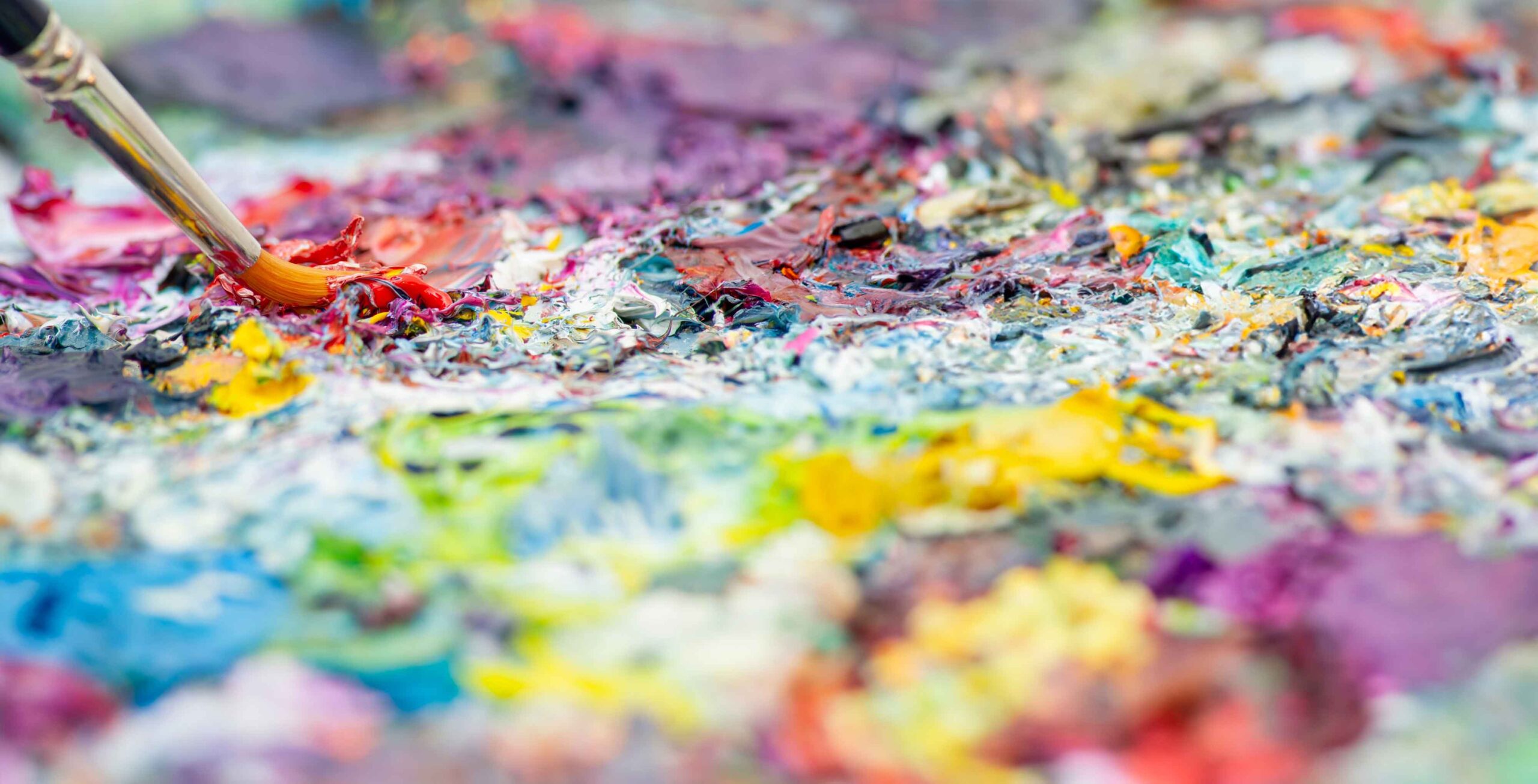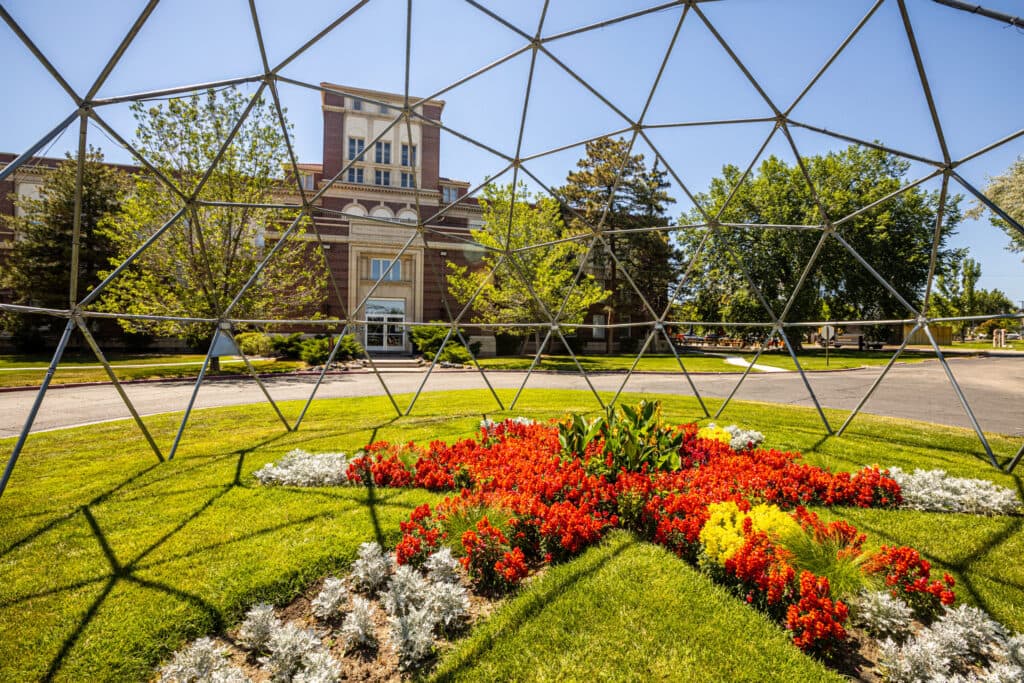Looking to expand your horizons while experimenting with different forms of art in the process? If so, mixed media artwork may be worth exploring. Not only does mixed media art allow you to draw on a wide range of artistic techniques to create something truly unique, but this style of art also allows for limitless innovation. Rather than being bound by the constraints of “traditional” art, mixed media art projects give artists the freedom to experiment and express themselves in a way that feels right to them.
What exactly is mixed media art, and what are some of the most common materials and techniques used in this art form? By learning more about mixed media art techniques and the inspiring artists who have created famous mixed media artworks, you just might be inspired to get started on your own project.
Understanding Mixed Media Art
Before we delve into the specific techniques associated with mixed media painting and mixed media art, it’s important to understand what this art form entails.
What Is Mixed Media Art?
According to Tate’s Modern Art Terms, “Mixed media is a term used to describe artworks composed from a combination of different media or materials.” For example, an artist may combine elements of traditional drawing or painting with photography, found objects, texture tools, collage materials or just about any other media imaginable. In some cases, mixed media may even incorporate digital art.
The History of Mixed Media
It is believed that mixed media was first used around 1912, when artists like Pablo Picasso and Georges Braque began creating cubist collages. Over time, mixed media has grown in popularity — and artists have gotten increasingly creative with the different types of media they are able to incorporate into their work. Today, mixed media remains a popular outlet for artists to express themselves with fewer boundaries.
Popular Materials Used in Mixed Media Art
When it comes to mixed media art ideas, artists are limited only by their imaginations. In fact, a number of both traditional and non-traditional materials can be used in mixed media art to create something one-of-a-kind.
Traditional Art Materials
Some of the more traditional materials often used in mixed media art include:
- Paints (including watercolors, oil paints, and acrylics).
- Drawing supplies (such as pencils, pens, pastels, and markers).
- Texture tools (including palette knives, stamps. and sponges).
- Adhesives (such as glue sticks and liquid glues).
- Different sealants and varnishes.
- Collage materials (ranging from tissue paper and fabric to magazines, newspapers and more).
Non-Traditional and Found Objects
In some cases, artists may get even more creative with the materials used in their mixed media collages or artworks. Some examples of less conventional materials that artists have used in their work include:
- Embroidery thread or yarn.
- Found objects (such as book pages, keys, and other items).
- Natural materials (like sticks, grasses, pinecones, sand, and stones).
- Mixed media sculpture materials (such as clay and plaster).
Techniques in Mixed Media Art
From creating art with recycled materials to exploring collage and assemblage art, there are all kinds of techniques artists can employ when creating abstract mixed media art.
Collage and Assemblage
One of the more common techniques used by mixed media artists is creating a college or assemblage using a wide variety of materials. By cutting and assembling different materials onto a surface (such as a canvas), artists can add depth and visual interest to their work while experimenting with varying mixed media collage ideas.
Artists frequently use collage and assemblage techniques to work with such materials as paper, found objects, photographs, and texturing tools.
Layering and Texture
Speaking of texture, the use of layering and texture is also crucial in many mixed media projects. Artists may combine numerous types of paint to create visual interest through layering, allowing each individual layer of paint to dry before moving onto the next. Meanwhile, texturing tools like palette knives and sponges can be used to create even more depth.
Mixed Media Drawing and Painting
Some artists will stick to more traditional materials in their mixed media artworks, including drawing and painting materials on a conventional canvas or paper. Rather than sticking to one type of paint or one type of drawing utensils, however, mixed media artists may experiment with everything from pencils and pastels to charcoals, watercolors and acrylic paints.
Creative Possibilities of Mixed Media Art
One of the biggest draws of mixed media art for artists is that there is no limit as to the number of materials that can be used or the techniques that can be applied. In turn, there are seemingly endless creative possibilities for artists to set themselves apart and create something unforgettable.
Combining Digital and Traditional Techniques
In more recent years, artists have begun exploring the use of digital art techniques to elevate their traditional work. For example, an artist may choose to scan a copy of a drawing and use an image-editing software like Adobe Photoshop to transform the piece. Likewise, it is not uncommon for artists to create work in digital platforms, print it out, and then add paint or other traditional media to the finished project.
Sculptural Mixed Media
Sculptural mixed media is another exciting possibility to explore in mixed media art. This technique involves using sculpting materials (such as clay or plaster) to create a work of art. From there, artists can add mixed media materials (such as found objects, paint, fabric and more) to elevate their work.
Inspiring Artists Working in Mixed Media
Over the years and into the present day, some incredible artists have made major strides in mixed media art, shaping the way we think about this distinct art form.
Contemporary Mixed Media Artists
Some examples of the most influential contemporary mixed media artists include:
- Mark Bradford (USA), a visual artist who is known for his collage paintings.
- Wangechi Mutu (Kenya/USA), a visual artist who specializes in mixed media through the use of painting, film, and sculpture.
- Nari Ward (Jamaica/USA), a sculptor known for the use of found materials that he discovers discarded in his own neighborhood.
- Mickalene Thomas (USA), a visual artist known for her mixed media creations composed of paint, rhinestones, enamel and other materials.
Emerging Artists in Mixed Media
In addition to some better-known contemporary mixed media artists, here are some emerging mixed media artists worth checking out:
- Tiff Massey (USA), a Detroit-based metalist and sculptor.
- Tahila Mintz (Barbados/USA), a cultural technologist who also uses photography and video to create mixed media works.
- Kudzanai Chiurai (Zimbabwe), a mixed media artist who primarily works with photography, drawings, paintings and sculpture.
- Cynthia Daignault (USA), a mixed media artist based in New York and Los Angeles.
Tips for Getting Started With Mixed Media Art
Interested in doing your own experimentation with mixed media art? Keep the following in mind when getting started.
Choosing Your Materials
It can be helpful to decide on the specific materials you wish to use for any given project. You don’t necessarily want to limit yourself to just a few materials; at the same time, you also don’t want to overwhelm yourself by working with too broad a range. For your first mixed media pieces, consider choosing a handful of materials to get started with. You can always add more if you feel compelled.
Without spending much (or any) money, you might consider the following to serve as your canvas and supplies:
- Blocks of wood
- Old books, magazines, photos, cardboard packaging, or sheet music
- Scraps of fabric or old clothing
- Oil, acrylic, or watercolor paints
- Colored pencils, crayons, or oil pastels
- Craft supplies from childhood (e.g., beads and gemstones)
- Leaves, dried flowers, or other objects from outside
Experimenting With Techniques
Finding success and satisfaction in mixed media is all about keeping an open mind to experimenting with different techniques and methods, like those mentioned above. From collages and sculptures to digital techniques and everything in between — the more you practice, the more likely you’ll be to find your niche within this area of art.
The Benefits and Challenges of Working in Mixed Media
Working in mixed media can be greatly enjoyable for many artists, even those who may be more grounded in traditional art forms. Of course, this isn’t to say that working with mixed media doesn’t accompany some inherent challenges as well.
Creative Freedom and Versatility
Perhaps the biggest benefit of mixed media artwork is the outlet that it provides to allow artists total creative freedom and versatility. As opposed to being confined by the conventions of more traditional art forms, mixed media art is particularly flexible and empowers artists to express themselves in whatever way they see fit.
Overcoming Challenges
At the same time, artists experimenting with mixed media could find themselves feeling overwhelmed at first. They may have become so comfortable and familiar working with a specific type of media that branching out to incorporate different materials or media forms (such as digital tools) can be a challenge. Additionally, mixed media simply might not be as respected or valued as classic art forms, which could pose struggles for those aiming to profit from their artwork. Such roadblocks can only be overcome with time and experimentation as artists home in on their individual goals while growing more comfortable working with varying types of media in their work.
Discover More in a Fine Arts Degree Program
Many artists enjoy working in mixed media for the opportunity to exercise their creative freedom while experimenting with different forms of art in the process. Of course, multimedia art does come with its own set of challenges and obstacles, but these can be overcome with the right education and experience. For those wanting to learn more about mixed media and other exciting art techniques, it may be time to explore an art degree program at Rocky Mountain College of Art + Design. Specifically, RMCAD’s Bachelor of Fine Arts program offers students a well-rounded education in a variety of media techniques including painting, sculpture, ceramics, printmaking, photography and more. Get in touch to learn more about any of our degree programs, or start your application for admission today.

